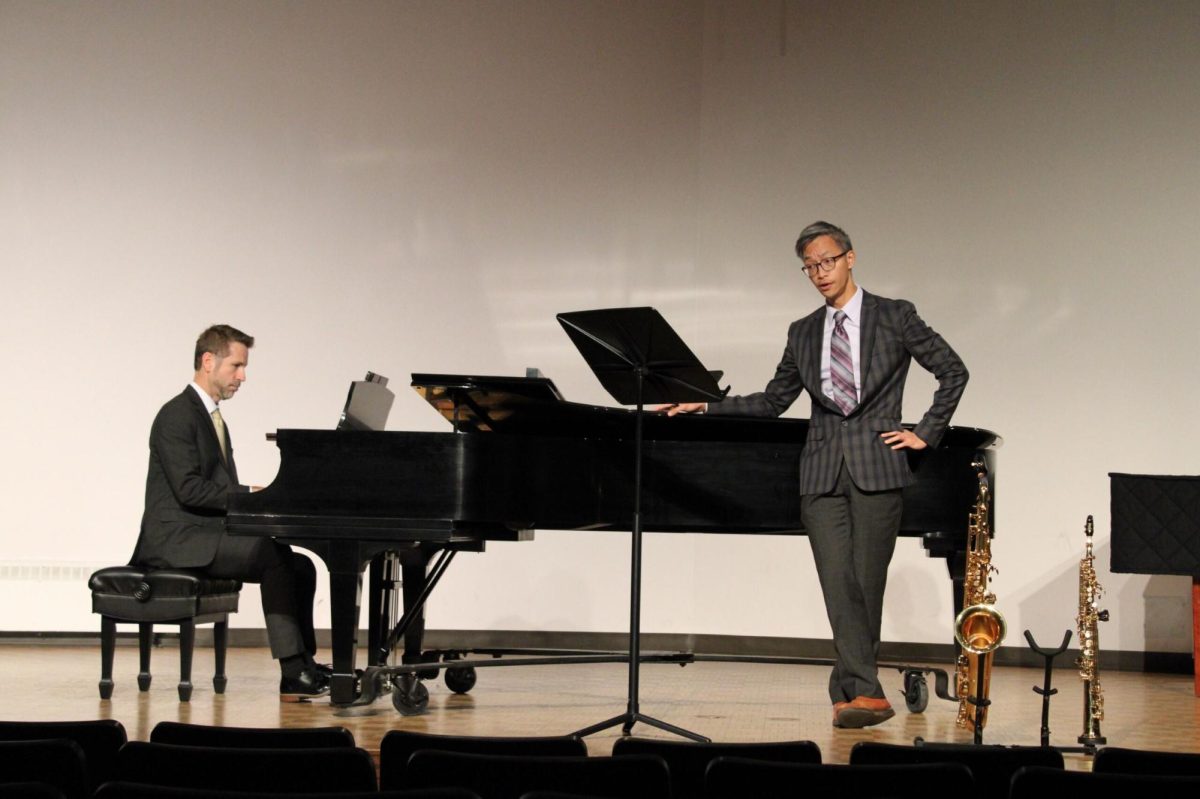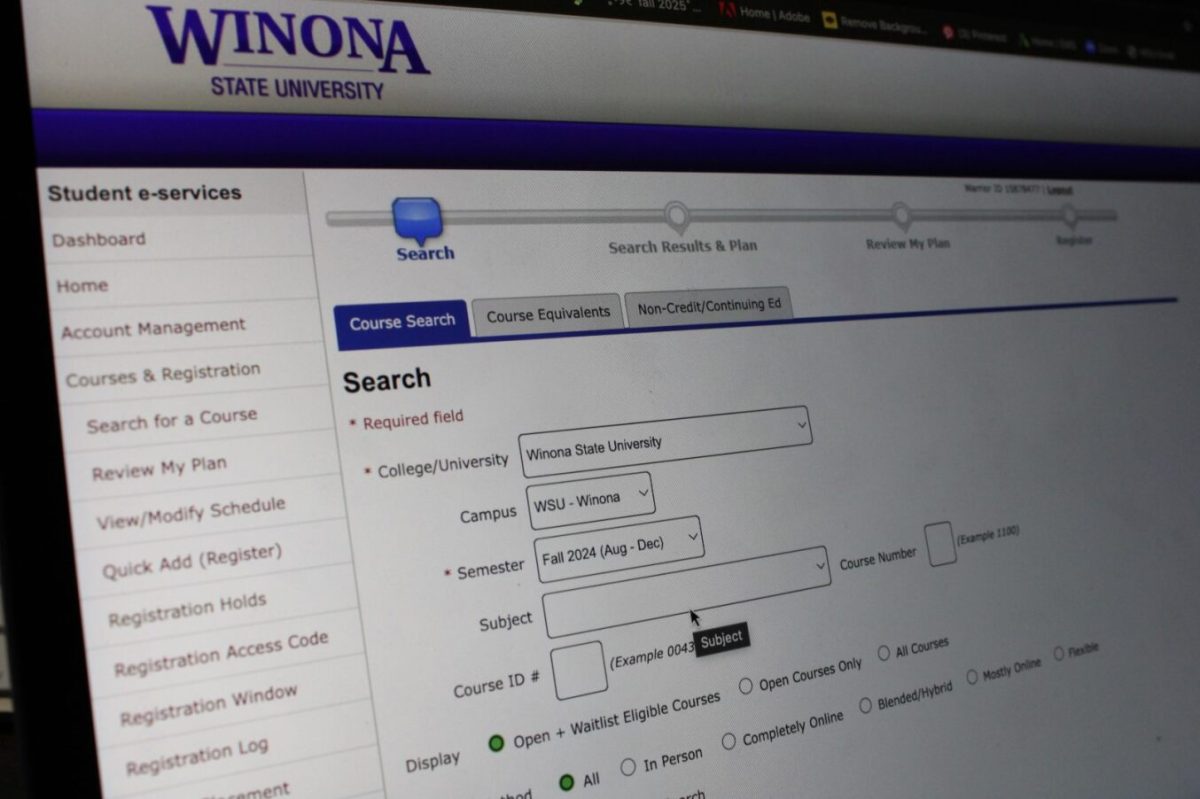On Sunday, Oct. 13, 2024, Winona State University’s very own Department of Music presented a celebration like no other, for the one and only George Gershwin. The celebration was performed by Christopher Dickhaus, Justin Badgerow and Jerry Hui.
George Gershwin, born in 1898, and was one of the most prolific and popular American composers known for blending classical, jazz, blues, and popular music into his work. Gershwin began his musical education at the ripe age of 11, when he learned to play piano. The musical prodigy spent many years under the influence of musical instructors until he dropped out of school at 15 and worked as a pianist and song plugger for a music publisher. As his musical knowledge deepened, Gershwin became a leading figure in Broadway music theater during the 1920s where he often collaborated with his brother Ira Gershwin who wrote many lyrics to his songs.
After much time in New York, Gershwin moved to Hollywood in 1936 and composed for many films. Gershwin tragically died a year later on July 9, 1937, due to glioblastoma, a common and aggressive brain cancer, at the age of 38. Although Gershwin’s death was cut his career short, he created some of the most cherished melodies, gave a new light on jazz and opera and his work helped to create an American sound independent of European influence.
“He was very important for taking the western classical music of Europe and the jazz music of America and creating his own music,” Dickhaus explained.
Dickhaus, the saxophonist, at the celebration put on quite a show for the audience, showing off the many years of experience he has in the musical world. Dickhaus has received numerous awards and honors ranging from state all the way to national acclaim. Dickhaus spreads his love and knowledge as a music professor, and Winona State has been very lucky to have had him as faculty since 2017. Along with guiding our musical Warriors, Dickhaus is an adjunct instructor of Saxophone at College Saint Benedict, Saint John’s university and Saint Cloud State University.
Badgerow, the Pianist and leader of the Gershwin celebration, enjoys a successful career as a solo and collaborative pianist along with being a professor of music at Elizabethtown College where he teaches both piano and music theory.
The vocalist of the event, Hui, is renowned composer, conductor, and performer. The baritone has a variety of musical experience and spreads his knowledge to his many students, community choirs, and orchestras. Hui is currently the director of core activities at University of Wisconsin–Stout, where he mainly teaches choirs amongst other classes.
Dickhaus, Badgerow and Hui have all have known each other for quite some time and regular attend differing music conferences across the globe. Originally, Badgerow and Dickhaus had planned to perform “Rhapsody in Blue” to celebrate the Gershwin.
They wanted to portray the various ways Gershwin contributed to the music world by curating the set list. Later, down the road, Hui joined as the vocalist as Badgerow and Dickhaus discussed their plans for the celebration at an international musical conference taking place in the Baltic during the Summer of 2023. Spending much time and energy composing their celebration, the three finally were able to take stage and perfectly execute two wonderful sets for the Gershwin Celebration.
The trio performed two wonderful sets which presented the many works of Gershwin. The first included “Fascinating Rhythm” (1924), “Embraceable You”(1928), “Nice Work If You Can’t Get It” (1937), “Unfamiliar Territory” (1986), and “Three Preludes for Piano” (1926). The second set consisted of “I Got Rhythm” (1930), “Someone to Watch Over Me” (1926), “Let’s Call the Whole Thing Off” (1937). Badgerow and Dickhaus ended the show with Gershwin’s most famous “Rhapsody in Blue” (1924). The seventeen minute piece involves three different saxophones to be used throughout the duration of the piece.
“The version has always been a bucket list piece for me,” Dickhaus said. “But it’s very, very challenging. It requires all the different things of the three saxophones”.
Dickhaus started on the alto saxophone, jumped to the soprano saxophone, switched back to alto, moved to soprano, transferred to the tenor saxophone, and then ended the piece with the alto saxophone. Badgerow and Dickhaus’s rendition of “Rhapsody in Blue” was a superb ending to a wonderful showcase of Gershwin’s work and celebration of his life.
Gershwin’s legacy is still seen today in various ways. His works are still frequently performed in orchestras and discoveries, his compositions are often used in film and television, and many of Gershwin’s compositions have become jazz standards. Gershwin’s famous opera “Porgy and Bess” produced in 1935 was recreated into a Broadway adaptation in 2012. Gershwin’s “Rhapsody in Blue” has even become United Airline’s brand music and is played on commercials, flights, and the airline’s clubs and lounges.
“There’s so much of [Gershwin’s] music that ended up being something that a lot of Americans nowadays would know without even understanding where they learned the music from,” Hui said. “So much of it is just living in the sort of American pop culture.”














































